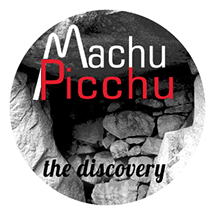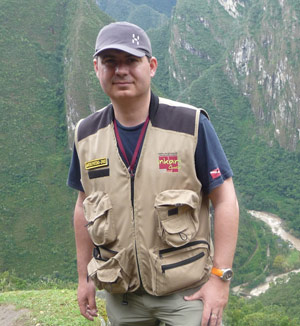
In February, 2010, David Crespy is taking some measurements of the ruins and small passages of the antique city. At the heart of the ciudadela, he notices the presence of a strange “door”, located at the foot of one of the main buildings and leading to a small path which seems to be almost never used by the tourists, or even the archaeologists from the site. For him, it makes no doubt. It is an entrance that has been sealed by the Incas. It is an entrance that leads somewhere. He immediately warns the archaeologists and the people in charge of Machu Picchu. Taken to the site, they seem very interested and promised to David Crespy to start investigating the site in a near future. They assured him that they will keep him touch and let him know about what they will found. But after months and months, despite several emails, phone calls and emails, he never receive any news from Peru about his possible discovery. In August, 2011, by chance he found an article in the French newspaper Le Figaro Magazine about the research work of Thierry Jamin in Peru. He decided to contact him immediately.
Informed about this case, Thierry Jamin, who was used to investigate several archaeological sites located in the North of Cusco in funeral context, was able to confirm David Crespy’s information. Between September and November 2011, with other archaeologists, he went to Machu Picchu on several occasions to investigate the famous location. His preliminary conclusions were categorical: Indee it was an entrance, sealed by the Incas at an undertermined period of time. This site was also strangely similar to the burial sites that Thierry Jamin and his companions often discovered in the valleys of Lacco-Yavero and Chunchusmayo.
A secret door?
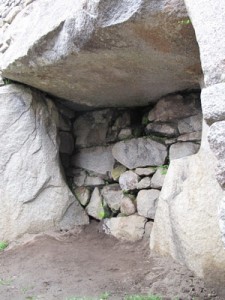
The general context of this “door”, fitted out in the center of one of the main buildings of the city, the “Temple of the Three Doors“, which dominates the whole urban sector, has persuaded Thierry Jamin that this site could be a burial site of prime importance.
Thanks to David Crespy, the French engineer who thinks he has located a secret entrance to a large building in Machu Picchu, we now have face the possibility of discovering an important grave (maybe royal) located in the heart of the city. The “Plan Maestro” of Machu Picchu (It is a reference document, realized by the Peruvian authorities for the management of the Inca site) considers the building as a Kallanka, or as a inn built during Inca times. However it does not seem to match with the general configuration of the site, located just a few steps away from the main entrance of the Inca city, directly above the “torreón” -a small reproduction of the Qoricancha, the Temple of the Sun in Cusco, the supposed “Royal Grave” (as identified by Hiram Bingham) and on the path that leads to the religious area.
Both the tradition and a few chroniclers, such as Juan de Betanzos, reported that Machu Picchu belonged to the panaka (lineage) of the emperor Pachacútec, the Inca who transformed the small Andean State into the most powerful empire of the American continent. The tradition also explains that Pachacútec would have been buried in the city of Patallacta, the original name of Machu Picchu. It is very possible that this burial chamber is somehow connected to this sovereign of the XVth century. It would be a huge event for the History of Peru and pre-Colombian America. Until now, no mummy of Inca emperor has been discovered. It would be an historical premiere !
On March 22nd, 2012, by his Resolución Directoral Nacional, N° 144 – 2012 – DGPC-VMPCIC / MC, the Peruvian Ministry of Culture gave its green light to Thierry Jamin’s team to realize a serie of electromagnetic surveys intended to confirm, or not, the presence of a funeral chamber, in the basement of the building N° 02, Sector 02, Sub-sector E, Unity 03 of the lost city.
The measurements reveal an underground cavity
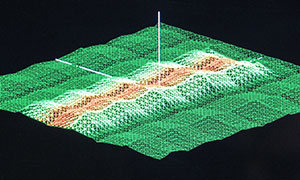
Realized from April 09th till the 17th of the same year, these surveys are going to confirm the presence of one or several cavities under this building. With the use of a georadar “Golden King DPRP”, the research team succeeded in confirming the existence of two entrances, located behind the famous door. The researchers also succeed in obtaining a 3D representation of a staircase thats leads to a main room : Is that a burial chamber?
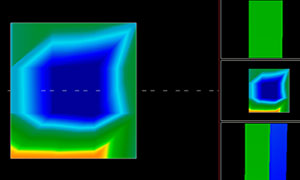
A few days later, new echos have been realized with a Rover CII New Edition and a CaveFinde, two devices designes to specifically detect subterranean cavities. The data collected has confirmed the presence of a staircase, several cavities, among which a vast quadrangular room that is about three meters aside, and oriented North-South East-West.

Georadars have also detected the existence of metals in great quantities. The located deposits are generally associated to the spotted cavities. The use of a Molecular Discriminator of Frequencies is going to highlight the presence of golden and silver objects.

Finally, the use of an endoscopic camera, introduced into the elevations between the entrance stones, has confirmed the hypothesis claiming that the stone blocks placed in the entrance of the building had only the function of closing the entrance and not that to support the internal structures of the building.

It seems that Thierry Jamin and his group did not make any mistake. The echos from the geo-radars are clear and the diagnosis from the technicians of the different companies specialized in geo-radars is without ambiguity. All the cavities discovered by the Inkari Institute – Cusco seem to match with a classic burial chamber of prehispanic time. Moreover, the entrance located by David Crespy is oriented Eastward as most of the prehispanic burial sites.
In all probability, it is a door, closed by the Incas, to hide something that was apparently very important. Here is maybe hidden one of the main archaeological treasure of Machu Picchu. The hypothesis defended by Thierry Jamin could even lead to the discovery of a Mausoleum, the one that emperor Pachacútec built in the XVth century for his own grave but also for his entire lineage.
